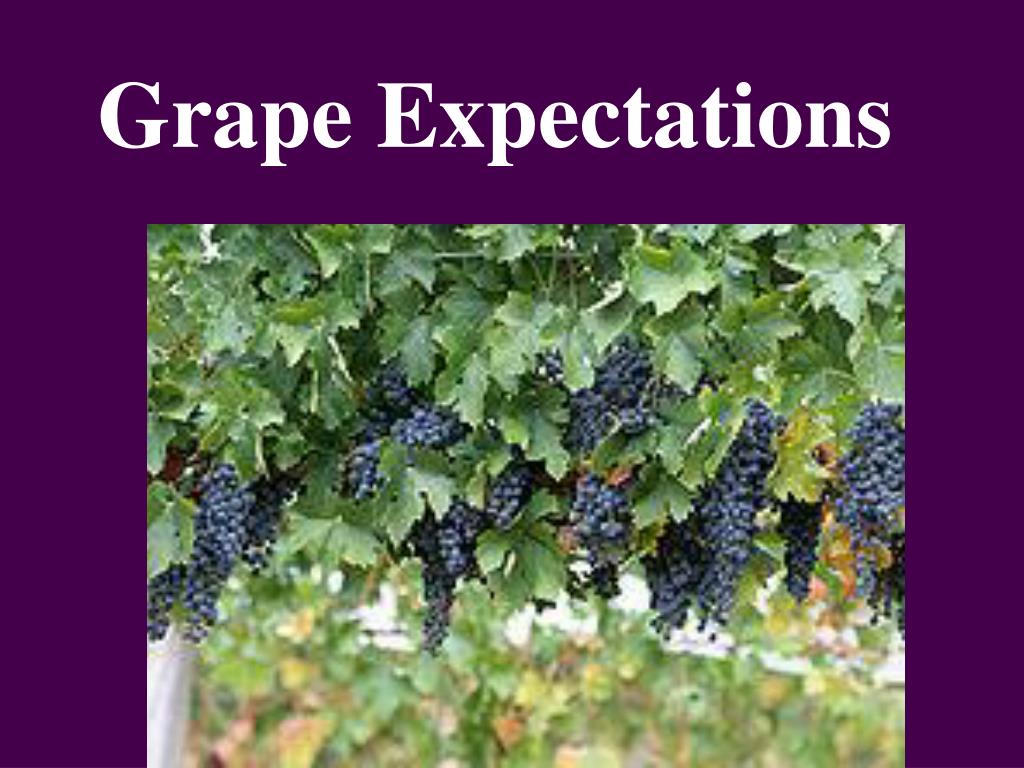Wine lovers across the globe often find themselves enchanted by the rich history and intricate processes behind their favorite beverage, leading to the phrase "grape expectations." As we delve into this fascinating subject, we will explore the journey of grapes from vine to glass, the various types of wines, their health benefits, and the significant cultural impact they have had throughout history. With the rise of wine tourism and the growing interest in sustainable practices, understanding the complexities of winemaking has never been more relevant.
In this extensive guide, we will cover essential aspects of grape cultivation, the winemaking process, and how different regions contribute to the diversity of wines available today. Furthermore, we'll discuss the importance of responsible drinking and the health implications associated with wine consumption. By the end of this article, you will have a comprehensive understanding of what grape expectations truly entail, and how this knowledge can enhance your appreciation for this age-old tradition.
Whether you're a seasoned sommelier or a casual drinker, the world of wine offers something for everyone. Join us as we uncork the secrets of grape expectations and uncover the beauty of this beloved beverage.
Table of Contents
- Biography of Winemaking
- Grape Cultivation: The Foundation of Wine
- Types of Wine: A World of Flavors
- The Winemaking Process: From Grape to Glass
- Health Benefits of Wine Consumption
- Cultural Impact of Wine Throughout History
- Sustainable Practices in Winemaking
- Conclusion
Biography of Winemaking
Winemaking, also known as vinification, is the process of producing wine from grapes. It dates back thousands of years, with evidence suggesting that the earliest forms of wine were made around 6000 BC in regions that are now part of modern-day Georgia. As civilizations evolved, so did the techniques of winemaking, leading to the diverse range of wines we enjoy today.
| Category | Details |
|---|---|
| Origin | Circa 6000 BC in Georgia |
| Key Regions | France, Italy, Spain, USA, Australia |
| Major Grapes | Cabernet Sauvignon, Chardonnay, Merlot, Pinot Noir |
Grape Cultivation: The Foundation of Wine
The journey of winemaking begins with the cultivation of grapes. Different grape varieties thrive in various climates, soils, and altitudes, influencing the final flavor profile of the wine. Factors such as terroir—the unique environmental conditions of a vineyard—play a crucial role in determining the characteristics of the grapes.
Key Factors in Grape Cultivation
- Climate: Temperature and rainfall affect grape ripening.
- Soil: The composition of soil impacts nutrient availability.
- Vine Training: The method used to train vines can influence grape exposure to sunlight.
Popular Grape Varieties
Some of the most popular grape varieties include:
- Cabernet Sauvignon: Known for its rich flavor and age-worthiness.
- Chardonnay: A versatile grape that can produce a range of wine styles.
- Pinot Noir: A delicate grape that reflects the terroir beautifully.
Types of Wine: A World of Flavors
There are several types of wine, each with unique characteristics. The primary categories include red, white, rosé, sparkling, and dessert wines.
Red Wine
Red wine is made from dark-colored grape varieties and is known for its bold flavors and tannins. Common varieties include Merlot, Cabernet Sauvignon, and Syrah.
White Wine
White wine is typically made from green or yellowish grapes and is often lighter and crisper than red wine. Popular varieties include Sauvignon Blanc, Chardonnay, and Riesling.
The Winemaking Process: From Grape to Glass
The process of winemaking involves several stages, each essential in developing the wine's final flavor and quality.
Harvesting
Grapes are harvested at their peak ripeness to ensure optimal flavor. This can be done by hand or machine, depending on the vineyard's practices.
Crushing and Fermentation
After harvesting, grapes are crushed to release their juice. Fermentation occurs when yeast converts sugars in the juice into alcohol, transforming the grape juice into wine.
Health Benefits of Wine Consumption
Moderate wine consumption has been linked to several health benefits, including:
- Antioxidant properties that may reduce the risk of heart disease.
- Improved cognitive function when consumed in moderation.
- Potential benefits for longevity associated with polyphenols found in red wine.
Cultural Impact of Wine Throughout History
Wine has played a significant role in various cultures, often associated with celebrations, rituals, and social gatherings. Historical texts and artifacts show that wine was an integral part of ancient civilizations, such as the Greeks and Romans, where it was used in religious ceremonies and as a symbol of hospitality.
Sustainable Practices in Winemaking
As the demand for environmentally friendly practices grows, many wineries are adopting sustainable methods. These include organic farming, water conservation, and reducing carbon emissions, ensuring that wine production is not only a celebration of culture but also a responsible endeavor.
Conclusion
In conclusion, the phrase "grape expectations" encapsulates the rich history, intricate processes, and cultural significance of wine. From the careful cultivation of grapes to the art of winemaking, every step contributes to the final product enjoyed by many. Understanding the nuances of wine can enhance your appreciation and enjoyment of this timeless beverage.
We invite you to share your thoughts in the comments below, explore our other articles on wine, and join our community of wine enthusiasts.
Call to Action
Don't forget to share this article with fellow wine lovers and join us as we continue to explore the diverse world of wines.
Thank you for reading, and we hope to see you back on our site soon!




